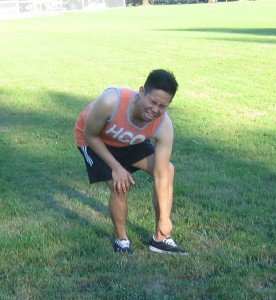Ankle fractures among children can be initially mistaken as sprains due to their striking similarities. Due to the similar mechanism of injury, an ankle injury has a higher likelihood of sustaining a fracture than adults. Children still have open growth plates that allow greater instability and weakness which leads to a higher risk of fractures. Children who sustain a fracture on or close to the growth plates face a higher risk for complications than those who have avulsion fractures. Even though surgical repair is required, the healing process occurs at a faster rate among children.
What are long bone fractures?
Fractures are basically cracks or breaks in bones and frequently triggered by trauma but can also be initiated by abuse. Greenstick fractures that occur in the ankle can occur on the fibula or tibia. This type of fracture occurs on the long bones and is distinguished by the bending and cracking of only one side of the long bone. Fractures can also occur when a long bone twists but does not break the outer layer which is called as a buckle fracture.

An avulsion fracture is considered as common ankle injuries among children. An avulsion develops once the ligament detaches from the bone and removes a small piece of bone with it. A displaced fracture is considered as a serious injury and occurs once the broken bone moves out of place.
Fractures on the growth plates
Fractures on the growth plates are categorized as type 1-4 based on their increasing severity. These fractures are also called as Salter fractures. The most common growth plate fracture is the type 2 tibial fracture. The separation at the growth plate are regarded as low to medium risk of problems while the epiphyseal plate fractures have the maximum risk of complications and can involve full disruption of the growth plate.
What are the symptoms?
The signs and symptoms of ankle fractures include bruising, swelling, tenderness, pain and inability to bear weight. As for displaced fractures, it can also have apparent deformities.
Children who are suspected with fractures must be carefully assessed by the doctor. A physical exam will be performed in order to determine if an X-ray is needed. If a fracture is suspected, an X-ray of the foot, ankle and leg will be taken. In most cases, a stress test X-ray will be performed to confirm the need for surgery. Severe injuries might also require a CT scan. If the result in the X-ray is negative, the doctor might require an MRI in order to check for soft tissue damage.
Fixing the problem
The non-surgical treatment is enough for most cases of fractures such as immobilization and closed reductions. In severe injuries, it would require operations and can be used for open reductions or even tendon reattachment. As for growth plate fractures categorized as type 1 or 2, they can be treated with closed reduction and immobilization. When immobilization is performed, it involves splinting or casting. You can learn more about immobilization by enrolling in a first aid class. Surgery might be the option for growth plate fractures categorized as type 3-5 or those that are drastically displaced.
